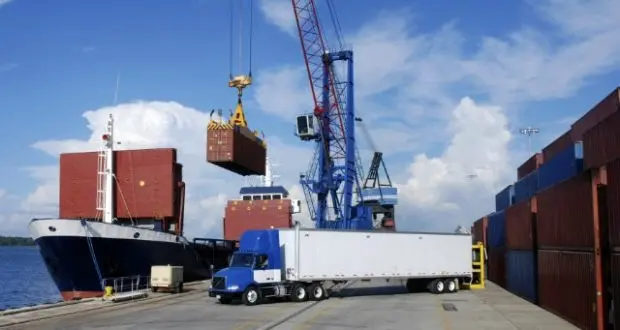Diesel technology lowest cost route to emissions reduction

As the Ports of Los Angeles and Long Beach (POLA/POLB) begin final consideration of their updated 2017 Clean Air Action Plan, regulators must embrace the future role of diesel technology in the global goods movement sector and the substantial air and climate benefits that the latest diesel technologies offer, the Diesel Technology Forum suggests.
The newest generation of clean diesel technology achieves near-zero levels of emissions for nitrogen oxides and particulate matter, while also maintaining an efficiency and performance advantage over other fuels, and is projected to remain the dominant technology for global goods movement at sea for the next years.
“As currently constructed, this updated Clean Air Action Plan must do more to recognize and leverage strategies like accelerated adoption of cleaner diesel engines and equipment that achieve proven near-term benefits. One of the key uncertainties of the plan is technology availability in the form of the timing, market success and availability of any alternative fuels and powertrains in the Port service setting. The potential for slowed or impaired progress in achieving clean air and greenhouse gas emissions reduction targets without a balanced fuel, technology and timeline approach is real,” said Allen Schaeffer, executive director of the Diesel Technology Forum.
As the port considers future technology investments upgrading or replacing older vehicles, equipment, switch locomotives and harbor craft with the latest clean diesel technology will do the most to deliver needed emission reductions to sensitive communities most in need of emission reductions in a timely manner.
According to the US Environmental Protection Agency’s (EPA) most recent National Port Strategy Assessment (December 2016):
Replacing a model year 2007 Class 8 drayage truck with a model year 2010 or newer diesel drayage truck can reduce NOx emissions by 221 lbs. Multiplied over the 60 percent of the truck fleet that does not come with technology to meet the model year 2010 standard, the port could reduce emissions by 2.1 million lbs. of NOx.
Replacing a single old engine that powers a switch locomotive with a Tier 4 model can reduce NOx emissions by 37,000 lbs. of NOx and 974 lbs. of particulate matter emissions. Replacing the older engine in the wide variety of marine workboats including tugs and ferries can have equally significant emissions reductions.
“These significant emission reductions could be delivered immediately by technology that is sitting on dealer lots today, which does not require the lengthy and expensive buildout of refueling or recharging infrastructure, or the widespread adoption of technologies not yet available at a commercial market scale,” said Schaeffer. “Further, the POLA/POLB can immediately enhance this proven clean air performance and achieve significant greenhouse gas reduction capabilities by utilizing low-carbon renewable diesel fuel in all its diesel engines and equipment.”
More recent demonstration projects show new concepts for clean diesel power in drayage operation. Drayage trucks with downsized diesel engines integrated with battery electric drive modes for on-port operations and a geo-fence enabled ability to switch to diesel power in off-port settings, give it a best-of-both worlds performance.
Since 2012, a new, near-zero NOx standard was established for model year 2010. However, according to the Clean Air Action Plan Update, about 60 percent of the fleet – roughly 9,600 California trucks – do not have the technology to meet the standard set for 2010.
According to the Forum’s most recent analysis, only around 23 percent of California’s commercial heavy-duty diesel trucking fleet – the largest in the United States at nearly a million vehicles – currently use the newest, cleanest diesel technology. The national average is 30 percent adoption.
“Excluding the latest clean diesel trucks from eligibility in a potential preferential access scheme will ensure substantial delays in achieving emission reductions for sensitive communities,” said Schaeffer.















![AIRBUS A380 [MORE THAN 600 PASSENGER’S CAPACITY PLANE]](https://cdn.tinn.ir/thumbnail/4jCp4EQvCU0b/IjHVrSYQrIAqIzXuTzADR7qLYX4idQT4nfq__26E5SCUPLMqfhWkWajvuO9Wfq1ql1TjV4dhkrHliNQU82kMpo2NNftT_NGEwHc9KXtN_rk731bmifa2IQ,,/airbus-a380-structure1.jpg)

Send Comment